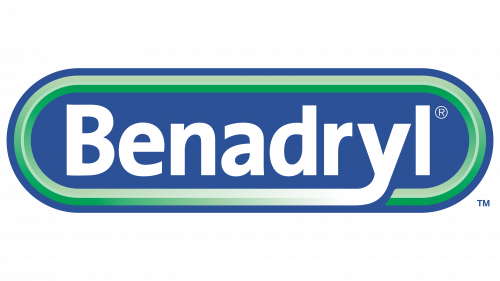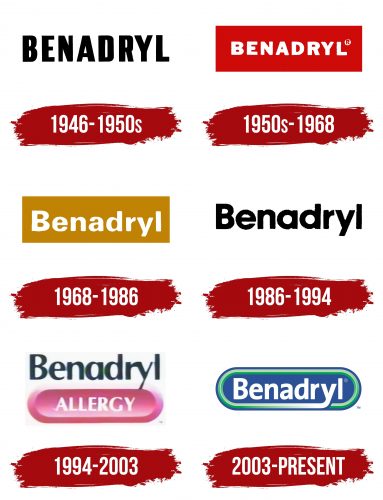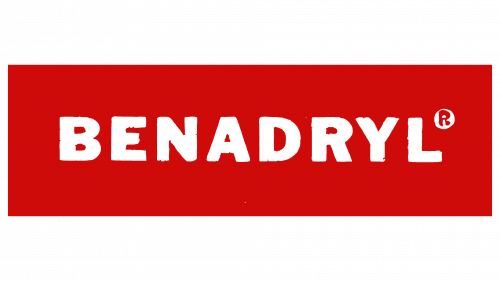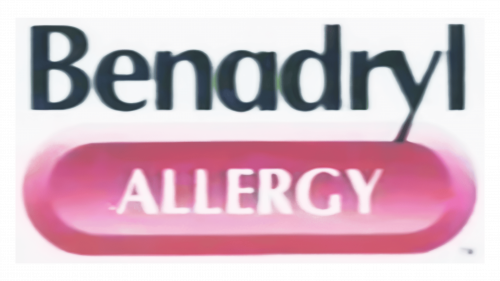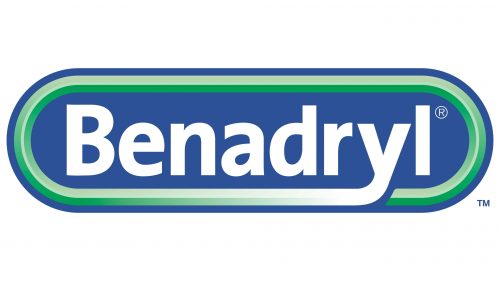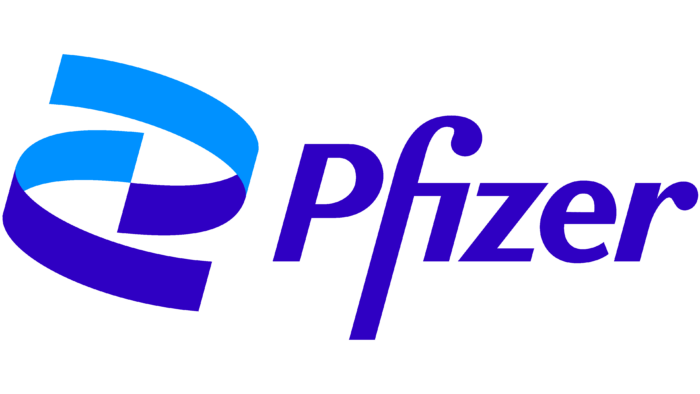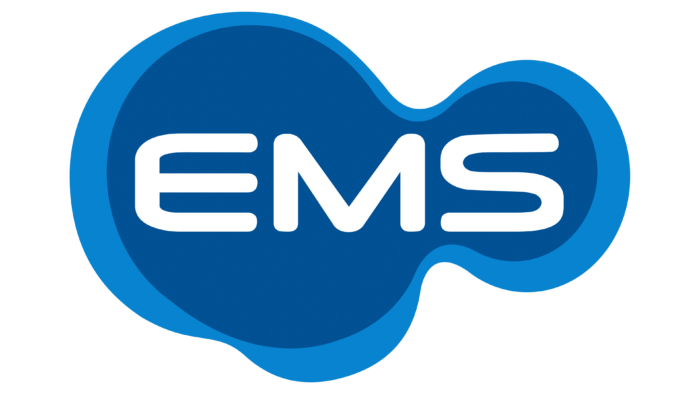The Benadryl logo symbolizes the medication’s reliable, round-the-clock protection. The emblem, designed in the shape of a capsule, reflects the idea that it contains the necessary ingredients to prevent allergic reactions. This visual emphasizes that the product creates a strong barrier between irritants and the user, ensuring peace of mind and confidence in allergy protection at any time of day.
Benadryl: Brand overview
American scientist George Rieveschl, who worked at Parke-Davis (later a division of Pfizer) in the 1940s, created diphenhydramine, which marked the beginning of Benadryl’s history. This drug represented a significant advance in treating allergies, as it was the first antihistamine to cure allergic responses without producing noticeable sleepiness.
The U.S. Food and Drug Administration (FDA) authorized the medication for prescription usage in 1946. The drug was first prescribed to treat hay fever and other allergy disorders and was accessible as tablets.
Physicians and patients actively promoted this allergy medication during the 1950s. Due to the medication’s rapid rise in popularity, allergy symptoms were relieved. Its uses expanded around this period when it started to be used to treat cold and flu symptoms.
Further research conducted in the 1960s validated the drug’s efficacy and safety in treating various allergy disorders. As a result, its position in the antihistamine market was bolstered, and its indications expanded.
When the medication became accessible over the counter in the 1970s, it was a major milestone. This FDA ruling increased the medicine’s accessibility for a larger group of people and facilitated its ongoing rise in popularity.
The product line grew in the 1980s. Liquid versions of the drug were added to the conventional tablet form, making it easier to take, particularly for old and young patients.
Further developments occurred in the 1990s. The drug was developed in a long-acting version that offers prolonged relief. New product forms were launched, such as a gel for topical application to skin allergies and insect bites.
A big shift in the medication’s history happened in 2000 when Johnson & Johnson bought the brand to acquire Pfizer’s over-the-counter medicine division. Thanks to this acquisition, the brand’s development and marketing now have more opportunities.
The product line continued to grow during the 2000s and 2010s. New forms were introduced, including sprays and tablets that dissolve quickly. The business started manufacturing specialty goods, such as products for kids, that cater to particular consumer demographics or illnesses.
In 2011, the brand’s owner, Johnson & Johnson, introduced a new Allergy Plus Congestion medicine line. This line offered a complete remedy for those experiencing allergies and nasal congestion simultaneously by combining diphenhydramine’s antihistamine qualities with the decongestant phenylephrine. This breakthrough demonstrated the company’s dedication to providing customers with more adaptable goods for addressing a range of illnesses.
In 2013, new tastes for its liquid formulations were introduced, thereby expanding its pharmaceutical line for youngsters. This action attempted to lessen parents’ difficulty managing their children’s allergy symptoms by making the drug more appealing to younger patients.
2015, a redesigned roll-on applicator for the Itch Stopping Gel was introduced. This invention improved the hygienic and convenient application of the gel, particularly when traveling. Customers looking for rapid treatment from bug bites and other skin irritations swiftly took to the new shape.
The product packaging was revised in 2017 with a more lucid dosage and administration instructions. This modification was part of a larger Johnson & Johnson program to improve the efficacy and safety of over-the-counter drugs.
2018 was a year of digital advancement. The company released a smartphone app allowing users to monitor local pollen levels and get tailored advice on treating allergy symptoms. This app was incorporated into the company’s plan to offer more than just prescription drugs to allergy sufferers; it was meant to be a complete solution.
In 2019, a comprehensive survey of consumer preferences regarding antihistamine medications was conducted. The study’s findings were applied to improve the brand’s product lineup and marketing tactics.
2020 saw a rise in educational programs. The company unveiled an online portal with educational materials regarding allergies, including causes, symptoms, and remedies.
The brand introduced Benadryl Naturals, a new product range, in 2021. This series was developed in response to the increased demand from consumers for more natural ways to manage allergy symptoms. Products in the series comprised plant extracts and other natural components that enhanced the primary antihistamine component’s efficacy. Thanks to this invention, the company could draw in customers who favored more conventional forms of therapy and break into a new market.
Fast-dissolving oral strips were released in 2023, a novel way to take the medication. This new version was created to offer more rapid relief from allergy symptoms and ease of usage, particularly when water is not readily available. Customers appreciated how swiftly and easily it worked.
Additionally, the business increased its cooperation with eminent allergists and academic institutions, participating in clinical trials and funding allergy-related scientific research.
Meaning and History
What is Benadryl?
It is a well-known over-the-counter antihistamine medication used mainly to relieve the symptoms of allergies. The active ingredient in the drug manufactured by Johnson & Johnson is diphenhydramine, which effectively relieves symptoms such as sneezing, runny nose, itchy eyes, and skin reactions caused by allergies or colds. The brand offers a variety of products, including tablets, liquid gels, and topical creams. The drug is primarily known for its anti-allergic properties, but due to its soothing effect, it is also used to treat motion sickness and as a sleep aid. This medication can be purchased over the counter in most countries and is included in many home medicine cabinets.
1946 – 1950s
The first Benadryl emblem is simple and concise. The black capital letters of the name emphasize the product’s reliability and instill confidence in its effectiveness, promising the user the desired results.
1950s – 1968
Adding a red background to the Benadryl lettering made the emblem more noticeable and appealing. In medicine, red often symbolizes inflammation and problem areas. The white text centered within this “hot spot” represents the relief of symptoms such as coughing, sneezing, and watery eyes, emphasizing the safety and effectiveness of the medication. The capital letters highlight its strength and dominance over illness. The extended glyphs suggest a broad range of applications, as the product treats various ailments in different countries.
1968 – 1986
Replacing the red background with gold symbolized the brand’s worldwide recognition. Benadryl tablets and syrups, available over the counter in Asia, America, and Europe, confirm its status as one of the most popular remedies for allergy relief. The updated font gives the lettering a more respectable and official appearance, emphasizing Benadryl’s authority as a trusted and recognized allergy treatment.
1986 – 1994
During this period, the emblem represents an updated version of the original logo. The black lettering, without a background or additional elements, emphasizes the brand’s confidence in its recognizability. Benadryl is already well-known worldwide and doesn’t require excessive promotion. The modern font makes the logo stylish and easy to read. This design lacks distinguishing marks, as more contemporary antihistamine medications are beginning to emerge in the market.
1994 – 2003
In 1994, the logo received an interesting update. A pink button with the problem’s name was placed on a white background. The soft pink color, unlike bright red, does not appear intimidating but is still associated with pain and discomfort. Above the button is the name of the medication offering the solution. This design created an associative link in consumers’ minds between allergies and Benadryl, reinforcing it as a remedy for combating unpleasant symptoms.
2003 – today
The Benadryl logo, which has been in use since 2003, reflects the brand’s evolution toward a more restrained and informative visual representation. The emblem is designed as an elongated cylinder, which immediately evokes associations with medication capsules. This is intentional—the shape emphasizes the pharmaceutical nature of the product, highlighting its medical reliability and purpose.
The blue color chosen for the main background symbolizes professionalism, a serious approach to treatment, and a commitment to health. This shade of blue is often associated with medicine and instills trust, creating the impression that the product is developed with all quality and safety standards in mind. This design reinforces users’ confidence that Benadryl is a reliable choice for combating allergies and other conditions requiring intervention.
An interesting design element is the white stripe that extends from the last letter “y” and encircles the entire logo. This element is not merely decorative—it symbolizes the protection the medication provides its users. The white line seems to wrap around the entire brand, emphasizing that Benadryl creates a protective barrier, shielding individuals from the unpleasant symptoms of allergies.
The green stripe running along the edges of the emblem adds a layer of symbolism. Green is traditionally associated with nature, safety, and health. It suggests that the product helps restore quality of life by caring for the well-being of those who suffer from allergies. Visually, this color complements the blue, balancing professionalism and natural care.
The brand’s visual identity reflects its mission—to help people feel better, no matter the challenges of allergic reactions.
